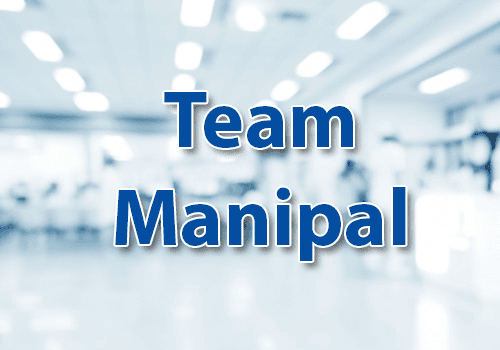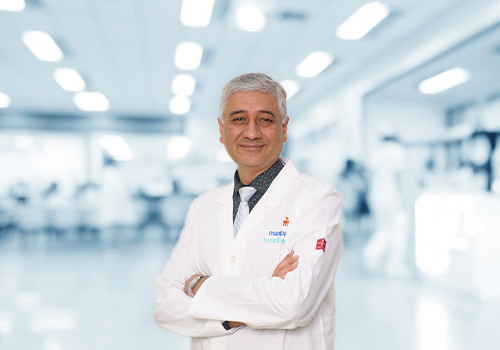
Listen to article
Loading audio...
An arrhythmia is one of the most common heart ailments in the world. Heart arrhythmia is a disorder characterized by an irregular heartbeat. It occurs due to improper functioning of the electrical impulses, which govern and regulate the rate of heartbeat. This abnormal heartbeat can be of three types:
- Tachycardia: very fast
- Bradycardia: very slow
- Premature contraction: early heartbeat
- Fibrillation: very erratic
Before we get into the details of arrhythmia, let us look at how exactly our heart works:
- Our heart consists of four chambers. The upper two chambers are called the atrium and the lower two are called ventricles.
- The blood enters our heart through the atria.
- Then, a group of cells in the right atrium, called the sinus node, send an electrical impulse to both the left and the right atria, signaling them to contract. This contraction sends the blood from the atria to the ventricles.
- When the ventricles fill with blood, an electrical impulse travels to the atrioventricular node, which is a group of cells located between the atria and the ventricles.
- When this electrical impulse exits the node, the ventricles are signaled to contract.
- This contraction pushes the blood out of the ventricles into the body for circulation.
What are the symptoms of Heart Arrhythmia?
The common signs and symptoms of arrhythmia depend on the type of the condition and are not necessarily indicative of a serious problem. The symptoms include:
- Angina (chest pain)
- Fluttering in the chest
- Dyspnea (breathlessness)
- Lightheadedness or dizziness
- Diaphoresis (Sweating)
- Syncope (fainting or nearly fainting)
- Sudden weakness
- Trouble concentrating
- Fatigue (tiredness)
- Palpitations
Causes of Arrhythmia
There are a number of factors that can cause the heart to beat abnormally, such as:
- Hypertension (high blood pressure)
- Smoking
- Diabetes
- Drug and substance abuse
- Excessive alcoholism
- Excessive coffee consumption
- Mental stress
- Hyperthyroidism (overactive thyroid gland)
- Hypothyroidism (underactive thyroid gland)
- Sleep apnea increases the risk of bradycardia, fibrillation and other arrhythmias
- Some medications, for example, over-the-counter medicines, and dietary supplements
- Some herbal treatments
- Electrolyte imbalance, for example, too high or low levels of potassium, sodium, calcium, magnesium etc. in the body adversely affects the heart’s electrical impulses
- Scarring of heart tissue due to a prior heart attack
- Coronary artery disease (blocked arteries in the heart)
- Changes in the heart structure due to factors like cardiomyopathy
- Genetics
Treatment For Heart Arrhythmia
The goal of treatment is to restore a normal heart rhythm, bring the heart rate within a normal range, and treat the underlying heart disease or condition that may be causing arrhythmia.
- Pacemaker: If no underlying problem for bradycardia is found, a pacemaker is placed under the skin of the chest or the abdomen in order to control abnormal heart rhythms. These pacemakers use electrical impulses to maintain the heartbeat at a minimum rate.
- Medications:
O Antiarrhythmic drugs: These drugs either help in bringing the heart rate within a relatively normal range. These may be given intravenously in case of an emergency situation or orally during a long-term treatment. These medicines must be taken daily and indefinitely. Another point to be noted is that these medications often result in side-effects which can be very hard to manage.
O Beta-blockers: They decrease the heart rate and cardiac output (the amount of blood pumped by the heart in one beat) which helps lower the blood pressure.
- Ablation: This procedure involves using radiofrequency energy to destroy a small part of the heart tissue causing irregular heartbeats. One or more catheters are inserted through the blood vessels and placed in the regions of the heart which are defective.
- Cardioversion: This is done in case of atrial fibrillation. In this procedure, an electric shock is delivered through paddles to the heart to help restore a normal rhythm.
- Implantable cardioverter-defibrillator (ICD): It is a device placed near the left collarbone. It stimulates the heart to return to a normal rhythm if it detects any abnormalities.
- Coronary Bypass Surgery: This is done in case of coronary artery disease. Arteries and veins from elsewhere in the patient’s body are grafted to the coronary arteries to bypass any regions that have become narrow in order to improve the blood supply to the heart muscle.
- Maze Procedure: In this procedure, a series of surgical incisions are made in the tissues in the upper half of the heart. When they heal, they develop into scar tissues. These scar tissues do not conduct electricity and guide the electrical impulses of the heart, improving its efficiency.
- Ventricular Aneurysm Surgery: This involves removing an aneurysm, or bulge, in a blood vessel leading to the heart which is the cause of an arrhythmia.
As common and debilitating as this condition is, the steps that can be taken to prevent it are simple enough. Some basic lifestyle measures like eating a heart-healthy diet, exercising regularly, losing excess weight, avoiding tobacco and reducing high cholesterol and blood pressure levels can help control the risk factors. Some forms of alternative therapies like Yoga and meditation have also been proven to reduce stress, which is a major aggravating factor for almost all the heart ailments.





















 4 Min Read
4 Min Read













